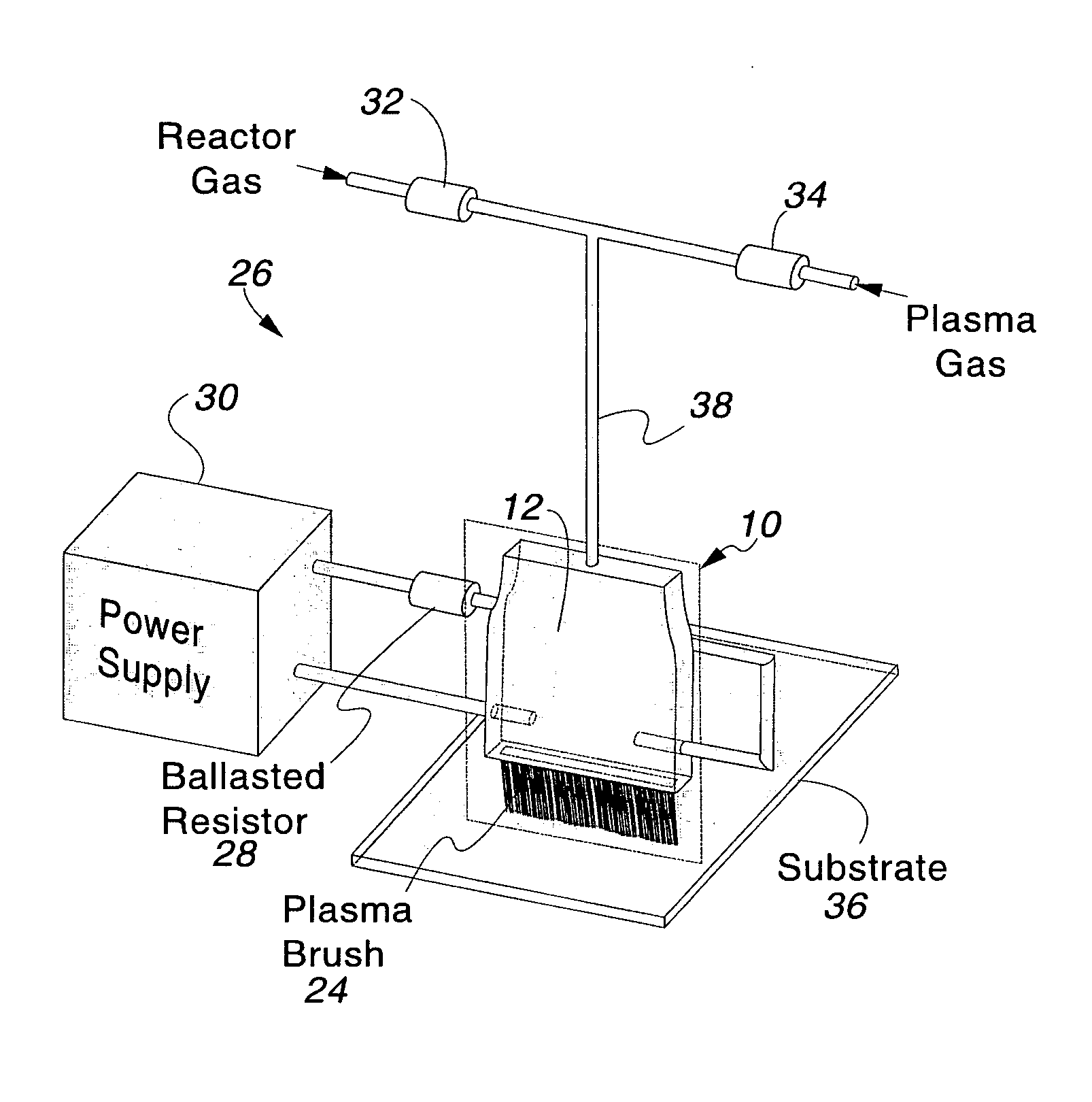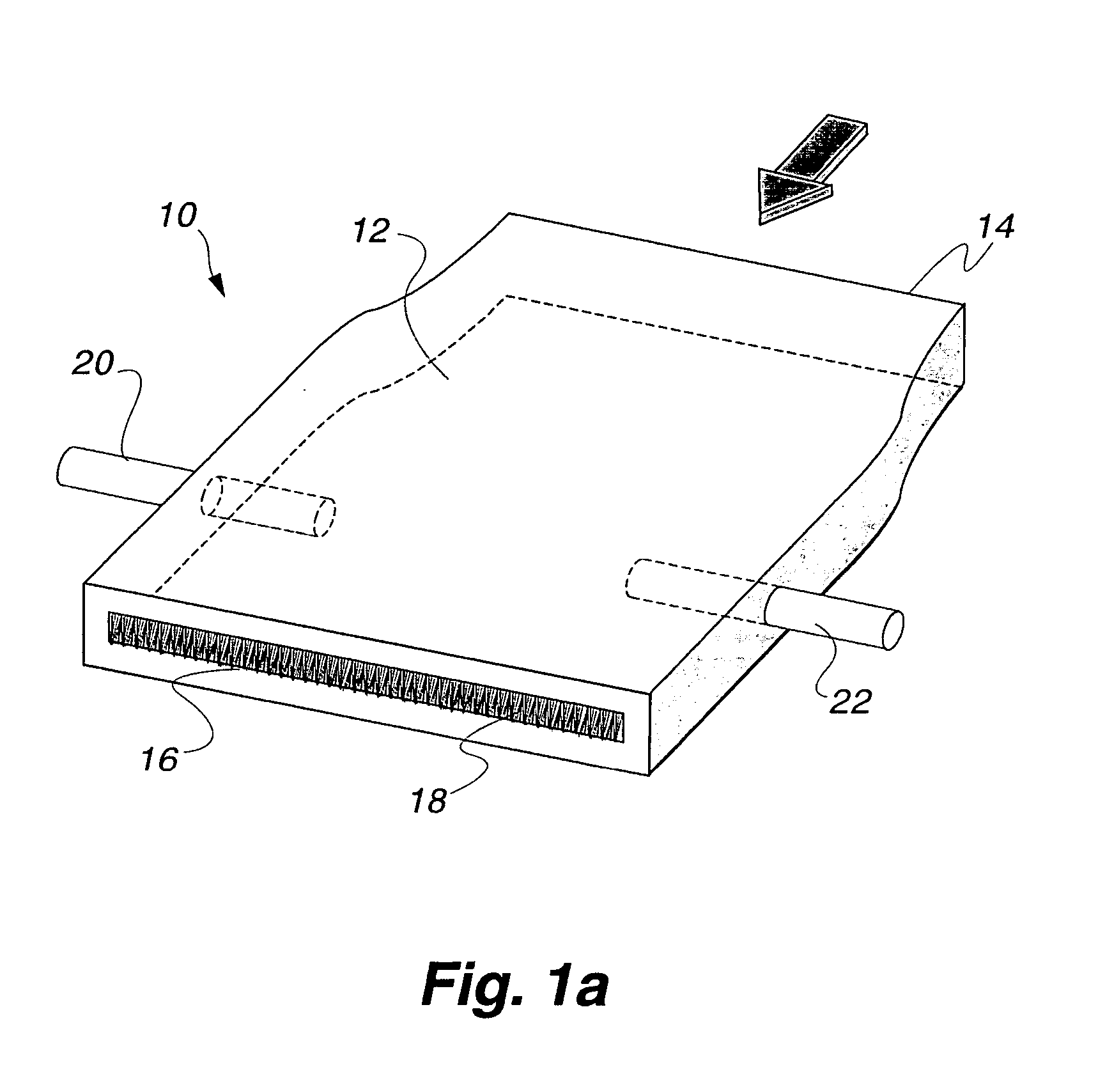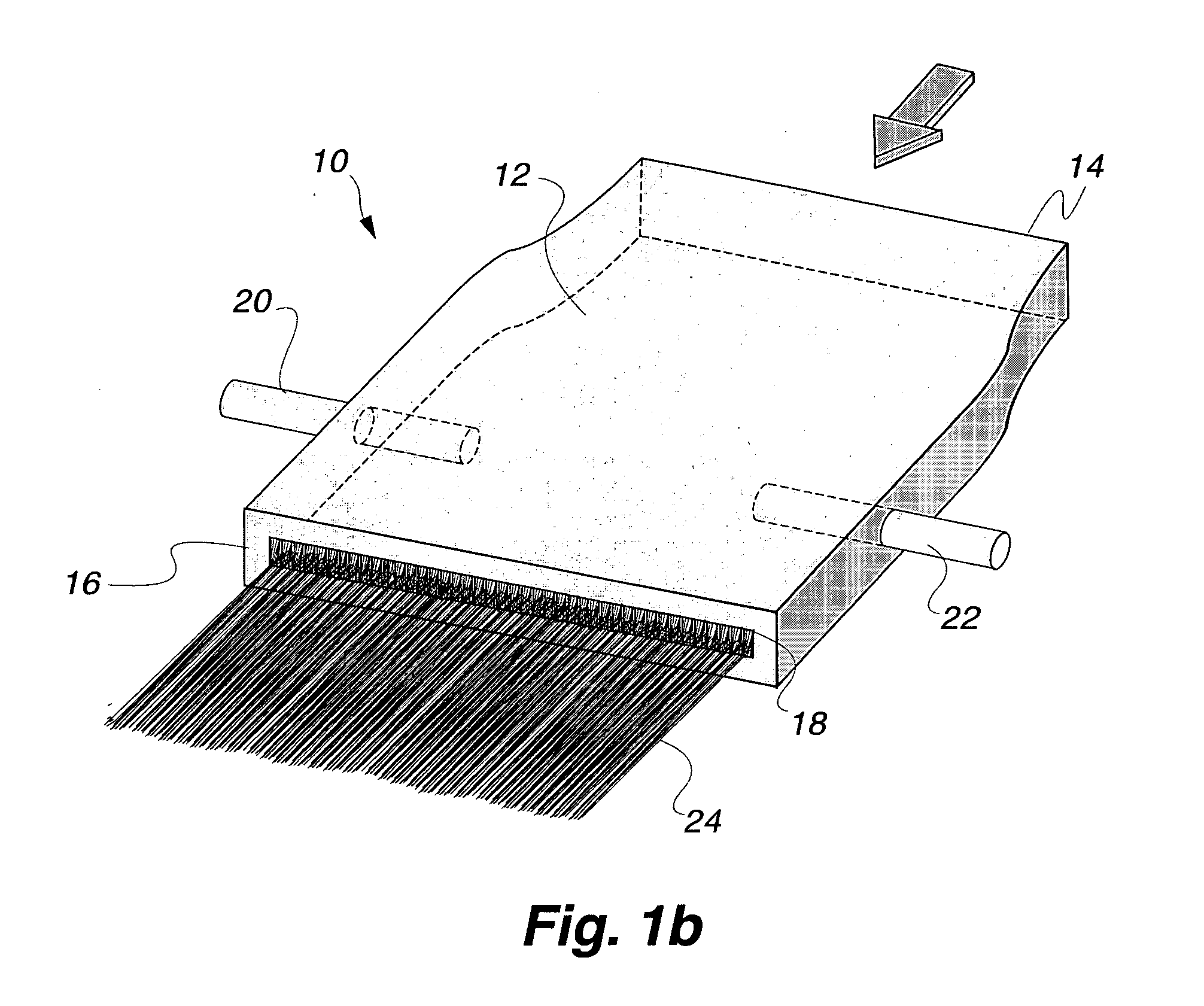Polymer treatment using a plasma brush
a plasma brush and polymer technology, applied in the direction of drying solid materials, drying, light and heating apparatus, etc., can solve the problems of limiting the use of chemical solvents, chemical-based methods/technologies have various limitations in surface modification functional capabilities, and disadvantages of using low-pressure plasmas, so as to change the effect of changing the surface wettability of polymer
- Summary
- Abstract
- Description
- Claims
- Application Information
AI Technical Summary
Benefits of technology
Problems solved by technology
Method used
Image
Examples
Embodiment Construction
[0018] The invention is concerned with the plasma treatment of polymer surfaces using a low temperature (i.e. less than about 300 degrees Celsius) atmospheric plasma brush.
[0019] An embodiment apparatus useful for polymer surface treatment has a walled, narrow slit gas chamber and two electrodes that are spaced apart and attached to the walls. The electrodes are inside the gas chamber. One of the electrodes is connected to a ballast resistor. When an electrical field is applied between the electrodes, a stable discharge of the plasma gas is formed between the electrodes inside the gas chamber.
[0020] Plasma gases useful with the plasma brush for treating polymer surfaces include, but are not limited to, helium, argon, nitrogen, oxygen, air, vapor of hydrocarbons, and mixtures thereof.
[0021] When the plasma brush touches the surface of a polymer, the discharge is uniformly distributed over the surface of the polymer. The dimensions of the plasma brush are determined by the gas flow...
PUM
| Property | Measurement | Unit |
|---|---|---|
| temperature | aaaaa | aaaaa |
| thickness | aaaaa | aaaaa |
| width | aaaaa | aaaaa |
Abstract
Description
Claims
Application Information
 Login to View More
Login to View More - R&D
- Intellectual Property
- Life Sciences
- Materials
- Tech Scout
- Unparalleled Data Quality
- Higher Quality Content
- 60% Fewer Hallucinations
Browse by: Latest US Patents, China's latest patents, Technical Efficacy Thesaurus, Application Domain, Technology Topic, Popular Technical Reports.
© 2025 PatSnap. All rights reserved.Legal|Privacy policy|Modern Slavery Act Transparency Statement|Sitemap|About US| Contact US: help@patsnap.com



